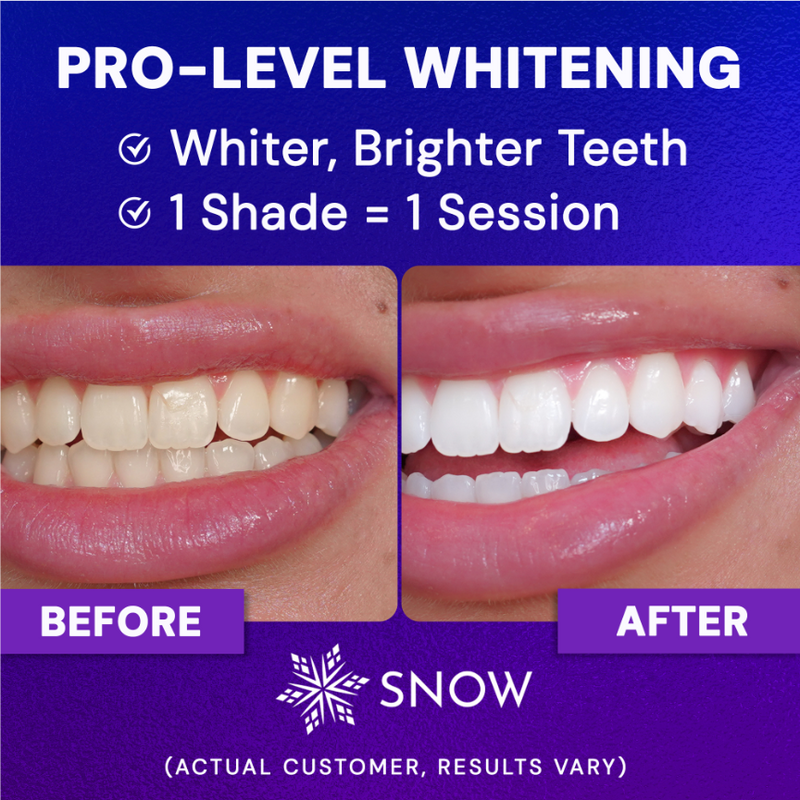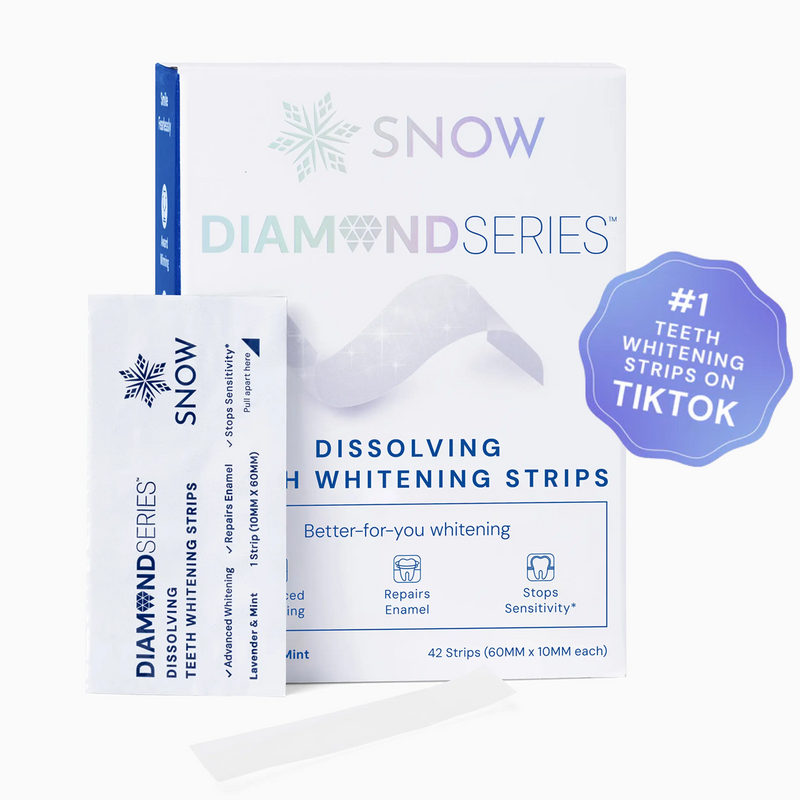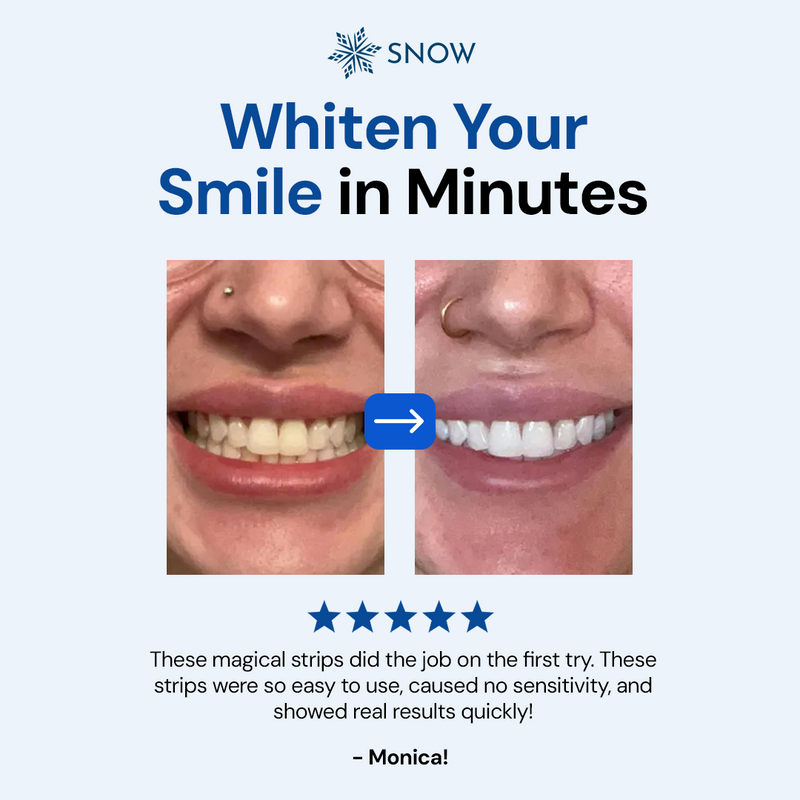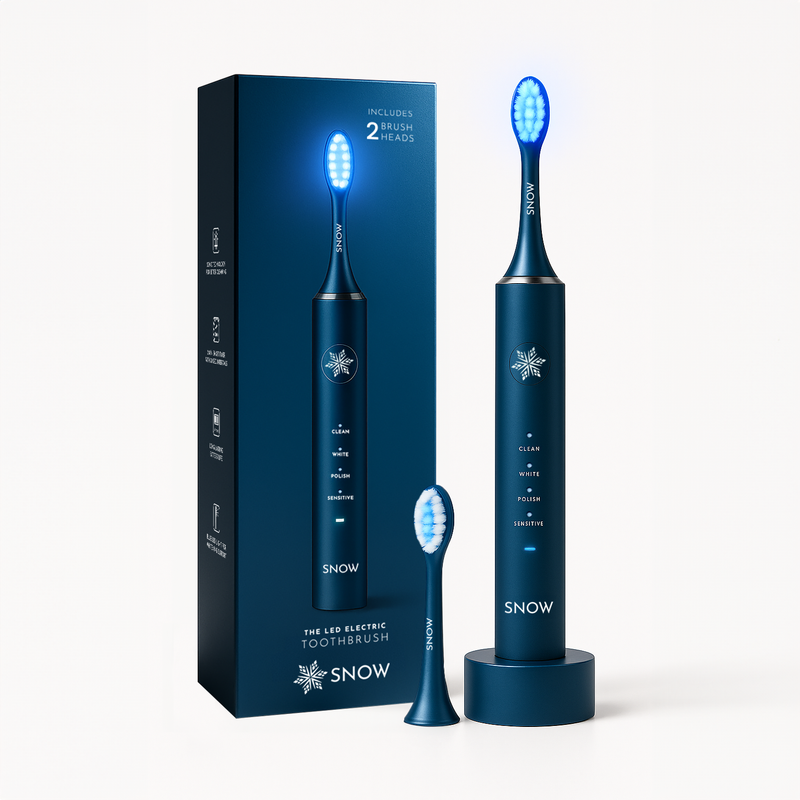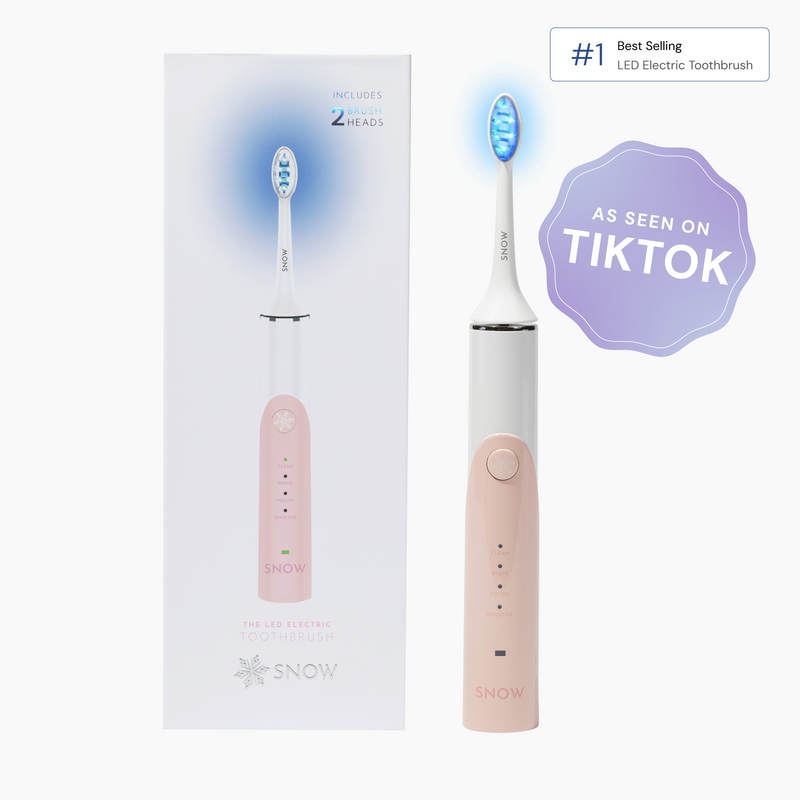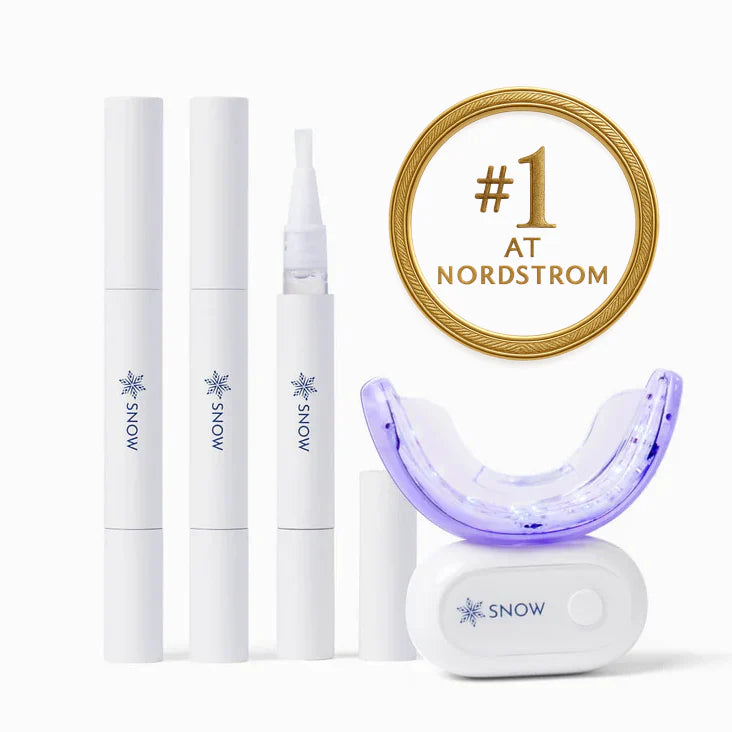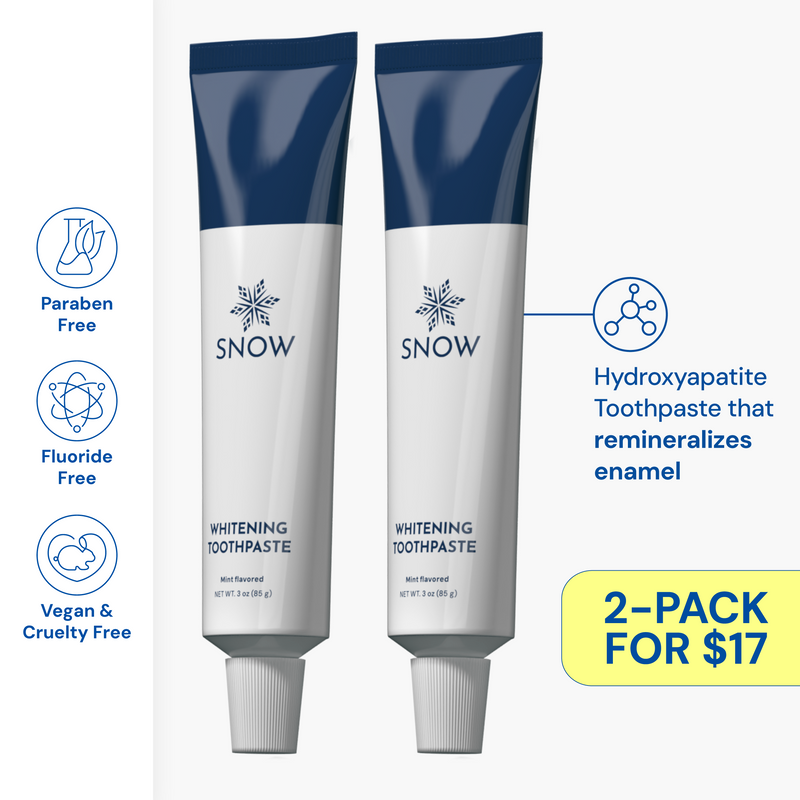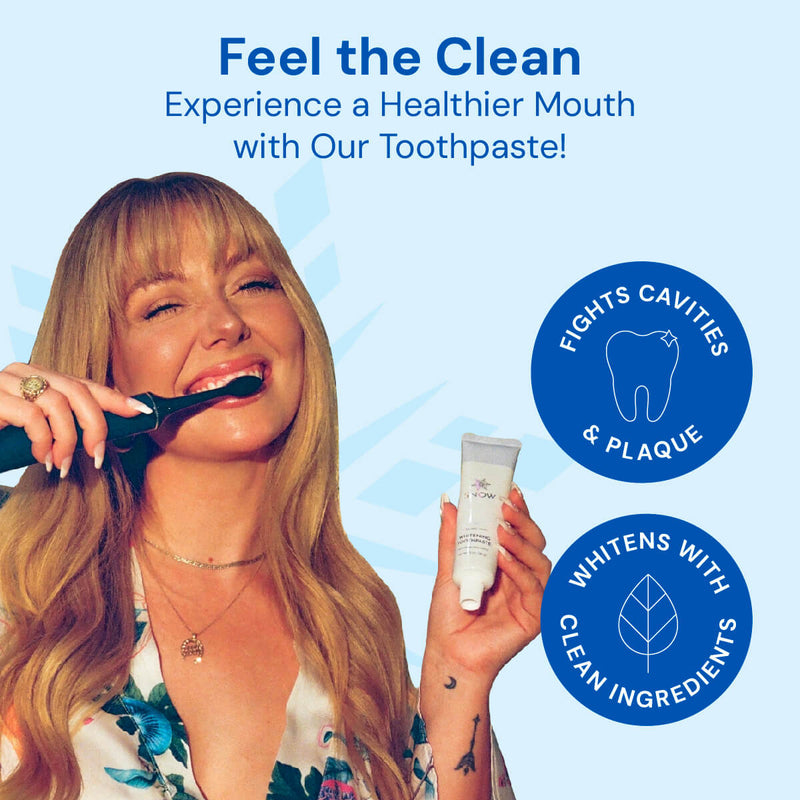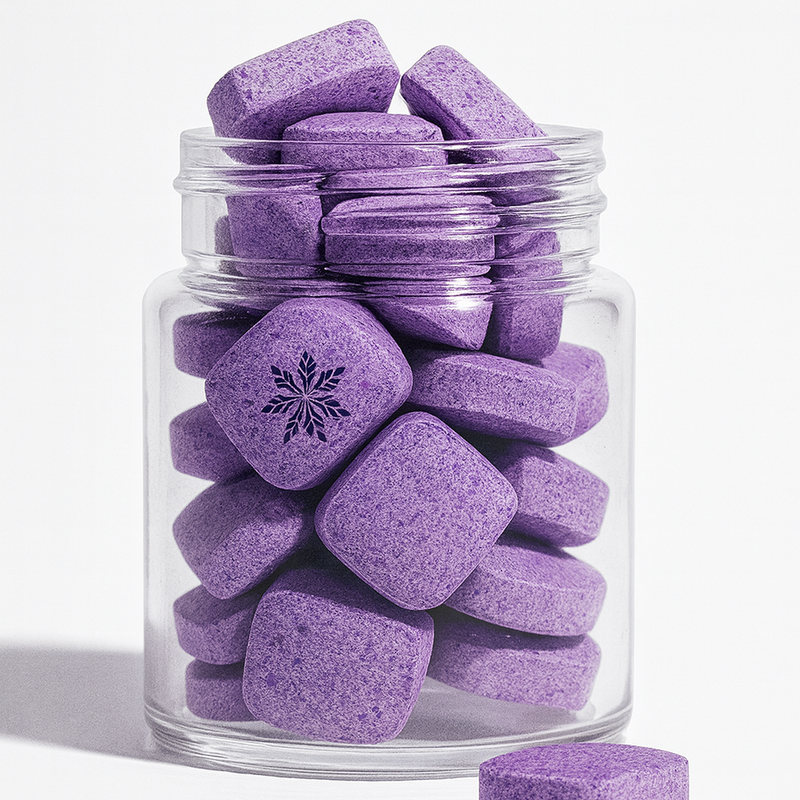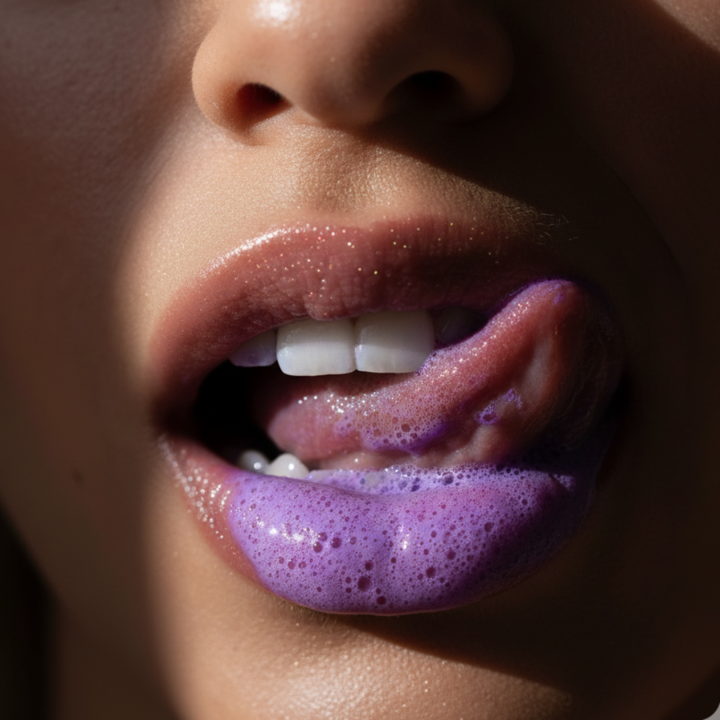At SNOW, we recognize the concern when toothbrushes unexpectedly turn pink. This discoloration often indicates the presence of bacteria, mold, or a chemical reaction.
But why is my toothbrush turning pink, you ask? In this article, we'll provide a direct answer to this common question and delve into the reasons behind it.
Understanding these factors is essential for maintaining optimal oral hygiene and preventing potential health issues.
We'll explore each possible cause in detail, sourced from reputable dental professionals and health experts.
Additionally, we'll offer practical tips on how to address and prevent your toothbrush from turning pink in the future.
Stay tuned to gain valuable insights into this perplexing dental phenomenon.
What this article covers:- Why Did My Toothbrush Turn Pink?
- How Often Should You Change Your Toothbrush?
- How to Choose The Ideal Toothbrush
- How Often to Disinfect a Toothbrush
- What Causes Gum Disease?
- How to Clean Electric Toothbrushes
- How to Keep Your Toothbrush Clean Longer
Why Did My Toothbrush Turn Pink?
If you've ever noticed your toothbrush sporting an unexpected pinkish tint, you're not alone.
At SNOW, we understand the curiosity behind this phenomenon and are here to shed light on the reasons behind it.
The transformation of your toothbrush color can be attributed to various factors, each contributing to its pink appearance.
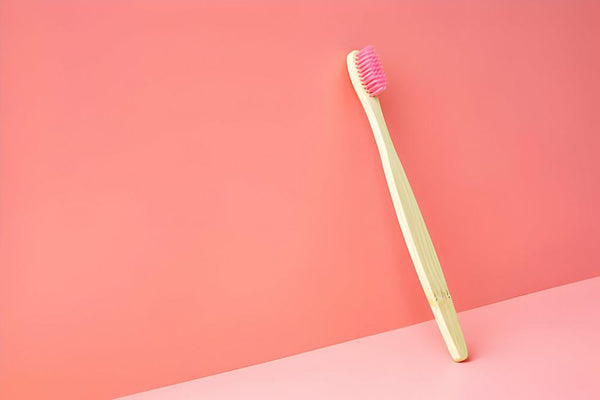
Reason 1: Bacteria
Over time, bacteria thrive on the moist environment of your toothbrush bristles, leading to discoloration.
Regular replacement is essential to maintain optimal oral hygiene and prevent bacterial buildup.
Enhance your dental routine with our LED Teeth Whitening Electric Toothbrush, designed for effective cleaning and whitening.
Reason 2: Mold
Mold spores, ever-present in the environment, can settle on your toothbrush, particularly in damp storage conditions. Combat mold growth with our Advanced Whitening Electric Toothbrush, offering superior cleaning and whitening capabilities.
Reason 3: Chemical Reaction
Some toothpaste or mouthwash chemicals may interact with the bristles, causing them to change color.
Our Replacement Heads for Advanced LED Electric Toothbrush ensure consistent hygiene and prevent color alterations caused by chemical reactions.
How Often Should You Change Your Toothbrush?
According to Real Simple, it's recommended to replace your toothbrush every three to four months to maintain optimal hygiene.
Ensuring a bright, healthy smile requires more than just brushing—it's vital to regularly replace your toothbrush.
At SNOW, we advocate for proactive oral care to combat toothbrush-related issues like discoloration, especially if your toothbrush is turning pink.
Your toothbrush's pinkish tint could indicate bacterial buildup or mold growth, emphasizing the importance of timely replacement. This is also a good opportunity to consider changing toothbrushes if the discoloration persists or if the bristles show signs of wear.
As VeryWell Health states, old toothbrushes can harbor harmful microorganisms, compromising oral health. By adhering to our recommendation, you can prevent discoloration and safeguard against potential health risks associated with contaminated toothbrushes.
How to Choose the Ideal Toothbrush
Ensuring optimal oral care begins with selecting the right toothbrush.
At SNOW, we prioritize both effectiveness and comfort to enhance your at-home teeth whitening experience.
When choosing your ideal toothbrush, consider the following factors:
Bristle Texture
Select soft or extra-soft bristles to prevent gum irritation and enamel damage while effectively removing surface stains.
Head Size
Opt for a toothbrush with a head size that comfortably fits your mouth, facilitating thorough cleaning of all surfaces, including hard-to-reach areas.
Handle Grip
Choose a toothbrush with a non-slip handle for enhanced maneuverability and ease of use during brushing sessions.
For superior teeth whitening results, we recommend our LED Teeth Whitening Electric Toothbrush, designed to gently yet effectively remove stains and brighten your smile.
With its advanced features and ergonomic design, our electric toothbrush ensures a comfortable and efficient brushing experience.
Some users might find that an electric toothbrush feels weird at first, but the enhanced cleaning benefits are well worth the initial adjustment period.
How Often to Disinfect a Toothbrush
If your toothbrush has turned pink because of bacteria, ensuring your toothbrush remains free from harmful bacteria is crucial. By disinfecting it, you can maintain optimal oral health and maximize the effectiveness of your at-home teeth whitening routine.
At SNOW, we understand the importance of proper toothbrush hygiene in achieving a bright and healthy smile.

Step 1: Remove The Head
To begin the disinfection process, detach the brush head from the handle. This step allows for thorough cleaning of each component, ensuring no area is overlooked.
Step 2: Wipe The Base
Next, using a disinfectant wipe or a cloth soaked in mouthwash, meticulously clean the base and handle of the toothbrush.
By eliminating any lingering bacteria in these areas, you can prevent potential contamination during future use.
Step 3: Dry And Assemble
After cleaning, allow all toothbrush components to air dry completely. Ensure the brush head, handle, and base are dry before reassembling the toothbrush.
Store the toothbrush upright in an open-air container to prevent moisture buildup, which can foster bacterial growth.
By following these simple steps regularly, you can effectively disinfect your toothbrush and maintain a healthy oral environment conducive to teeth whitening success.
What Causes Gum Disease?
At SNOW, we recognize the importance of understanding the connection between gum disease and toothbrush hygiene, especially in the context of teeth whitening.
Gum disease, also known as periodontal disease, occurs due to the accumulation of plaque, a sticky bacterial film that forms on teeth surfaces.
Link To Toothbrush Hygiene
The buildup of plaque on teeth can lead to gum inflammation and disease over time.
When plaque is not adequately removed through proper brushing and flossing, it can harden into tartar, which irritates the gums and causes them to become swollen, red, and prone to bleeding.
In severe cases, gum disease can result in gum recession, where the gums pull away from the teeth, creating spaces where bacteria can thrive.

Connection To Toothbrush Turning Pink
In the context of a toothbrush turning pink, gum disease can exacerbate the issue. As gum disease progresses, it can cause the gums to become more sensitive and prone to bleeding. This bleeding may transfer onto the toothbrush bristles, leading to a pinkish hue.
Additionally, individuals with gum disease may experience gum recession, exposing the toothbrush bristles to more bacteria and potentially contributing to discoloration.
Understanding the relationship between gum disease and toothbrush hygiene is essential for maintaining oral health and achieving optimal results with at-home teeth whitening.
What Is Gingivitis?
Gingivitis, the precursor to gum disease, is a condition characterized by inflammation of the gums.
At SNOW, we understand the significance of gingivitis in relation to toothbrush hygiene and teeth whitening.
Poor oral hygiene practices can contribute to the development of gingivitis, as plaque accumulates along the gumline.
Connection To Toothbrush Turning Pink
The presence of gingivitis can influence the color change observed on toothbrush bristles. As gingivitis progresses, the gums become more susceptible to bleeding, especially during brushing.
This bleeding can transfer onto the toothbrush bristles, causing them to take on a pinkish hue. Additionally, the inflammation associated with gingivitis may result in increased sensitivity of the gums, further contributing to bleeding and discoloration of the toothbrush.
Understanding the role of gingivitis in toothbrush hygiene is essential for maintaining oral health and optimizing the results of at-home teeth whitening.
What Is Periodontitis?
Periodontitis represents a severe stage of gum disease marked by irreversible harm to the gums and underlying bone structure.
At SNOW, we recognize the importance of understanding periodontitis in the context of toothbrush hygiene and teeth whitening.
Failure to address periodontitis can result in tooth loss and even impact overall health.
Connection To Toothbrush Turning Pink
Periodontitis can contribute to the discoloration of toothbrush bristles. As the condition progresses, the gums become inflamed and prone to bleeding. This bleeding may transfer onto the toothbrush, causing the bristles to appear pink.
Additionally, the presence of periodontitis indicates a significant bacterial load in the mouth, which can lead to plaque accumulation on the toothbrush and subsequent discoloration.
Recognizing the implications of periodontitis for toothbrush hygiene is essential for maintaining oral health and optimizing the effectiveness of at-home teeth whitening treatments.
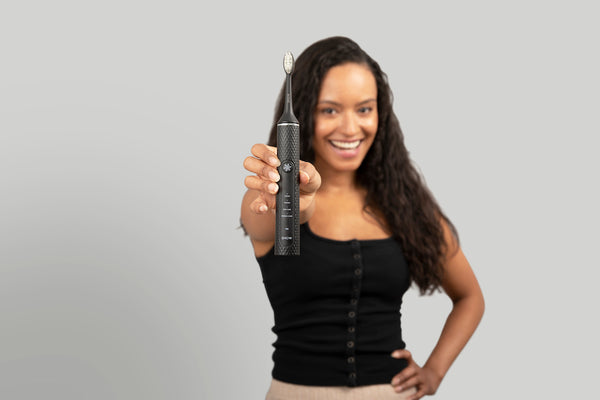
How to Clean Electric Toothbrushes
Ensuring the cleanliness of your electric toothbrush is vital, especially in the context of toothbrushes turning pink. Follow these simple steps to maintain your electric toothbrush effectively:
Step 1: Remove The Head
When your toothbrush starts showing signs of pink discoloration, it's crucial to act promptly.
Begin by detaching the brush head from the handle and rinsing both parts thoroughly under running water.
This step helps remove any visible debris and bacteria buildup, preventing further discoloration.
Step 2: Clean The Handle
Pink toothbrushes may indicate the presence of harmful bacteria.
Use a damp cloth or disinfectant wipe to gently clean the handle and any grooves or crevices where bacteria might hide.
This thorough cleaning helps eliminate potential sources of discoloration and ensures optimal hygiene.
Step 3: Sanitize The Head
To tackle stubborn bacteria and prevent the recurrence of pink discoloration, soak the brush head in a mixture of water and mouthwash for a few minutes.
This sanitizing solution effectively kills bacteria and leaves your toothbrush head fresh and clean. Rinse the head thoroughly before reattaching it to the handle.
By following these steps regularly, you can maintain the cleanliness of your electric toothbrush and prevent pink discoloration, ensuring effective at-home teeth whitening.
How to Keep Your Toothbrush Clean Longer
Ensuring the longevity of your toothbrush is crucial, especially in the context of preventing pink discoloration.
Follow these practical tips to maintain a clean toothbrush and prevent potential discoloration:
1. Rinse Thoroughly
After each use, thoroughly rinse your toothbrush under running water to remove toothpaste residue and debris. This simple step helps keep your toothbrush clean and prevents the buildup of substances that may contribute to discoloration.
2. Store Upright
Store your toothbrush in an upright position to facilitate proper air circulation and drying. This prevents moisture buildup, which can create an environment conducive to bacterial growth and potential discoloration of the bristles.
3. Avoid Sharing
Sharing toothbrushes should be avoided at all costs to prevent the transfer of bacteria and potential contamination.
Each person should have their own toothbrush to maintain optimal oral hygiene and prevent the risk of pink discoloration.
By adhering to these simple yet effective practices, you can ensure that your toothbrush remains clean and free from discoloration, promoting both oral health and overall well-being.
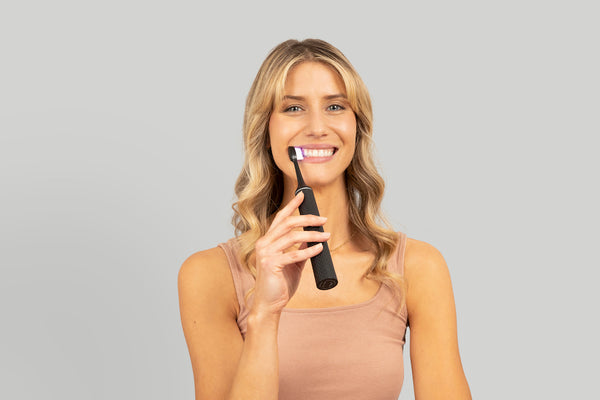
Conclusion
In wrapping up our discussion, it's clear that maintaining oral hygiene is paramount to preventing tooth discoloration, including the dreaded pink hue.
Regularly cleaning your toothbrush and ensuring its longevity through proper storage and individual use are essential steps in this journey.
By following these tips, you can safeguard not only your toothbrush but also your oral health, steering clear of potential discoloration pitfalls. Remember, a clean toothbrush is a happy toothbrush, and a happy toothbrush leads to a brighter, whiter smile.
For those looking to enhance their smile further, consider exploring SNOW's innovative teeth whitening solutions. Discover how SNOW can elevate your teeth whitening experience at SNOW's website.
If you want to learn more, why not check out these related posts:
- Toothbrush Hurt My Gums
- Why Should You Change Your Toothbrush Every 3 Months
- Best Electric Toothbrush for Small Mouths
- When to Change Your Toothbrush After Strep
- Vibrating Toothbrush vs. Rotating
- Electric Toothbrush or Manual
- Soft or Hard Toothbrush
- Bamboo Toothbrush Benefits
- Tongue Scraper vs. Toothbrush
- Soft vs. Extra Soft Toothbrush
- Electric Toothbrush Round Head vs Oblong
- Bamboo Toothbrush Mold
- How to Clean Toothbrush
- When to Change Toothbrush After Being Sick
- How to Clean Electric Toothbrush















































